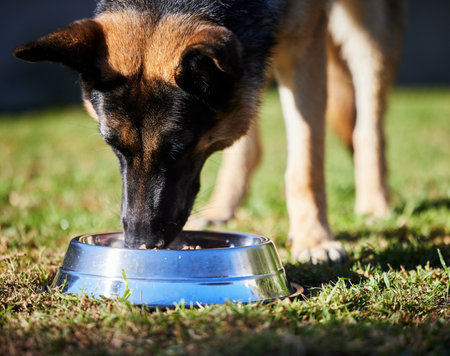1. Understanding Advanced Obedience Training
Advanced obedience training goes beyond the basics and focuses on refining your dogs skills, improving reliability, and teaching more complex commands. If your dog has already mastered basic obedience like sit, stay, and come, advanced training will take their abilities to the next level.
How Advanced Training Differs from Basic Training
While basic obedience establishes essential commands and behavior, advanced training enhances precision, off-leash control, and responsiveness in challenging environments. Here’s a comparison of basic versus advanced obedience training:
| Training Level | Focus Areas | Examples of Commands |
|---|---|---|
| Basic Obedience | Foundation skills, leash manners, simple commands | Sit, Stay, Come, Heel, Down |
| Advanced Obedience | Off-leash control, complex commands, real-world application | Heel without leash, Place command, Emergency recall, Directional commands |
The Benefits of Advanced Obedience Training
Pursuing advanced training benefits both you and your dog in multiple ways:
For Your Dog:
- Mental Stimulation: Learning advanced commands keeps your dog engaged and mentally active.
- Better Behavior: Improved discipline results in fewer behavioral issues.
- Increased Freedom: Off-leash training allows for more independence while maintaining control.
For You:
- Easier Management: A well-trained dog is easier to handle in any situation.
- A Stronger Bond: Working together strengthens trust and communication.
- A More Enjoyable Companion: Your dog can accompany you in more environments with confidence.
2. Building a Strong Foundation
Before advancing to more complex obedience training, its essential to ensure your dog has mastered basic commands like sit, stay, and recall. These foundational skills create a reliable and responsive dog, making advanced training smoother and more effective.
Why a Strong Foundation Matters
A well-trained dog is not just about performing tricks; its about fostering good behavior and communication. Strengthening basic obedience helps your dog stay focused, respond promptly, and remain calm in different environments.
Key Foundational Commands to Reinforce
| Command | Description | Tips for Reinforcement |
|---|---|---|
| Sit | Your dog sits until released. | Use treats and praise consistently. Delay rewards slightly to encourage patience. |
| Stay | Your dog remains in place until you give a release cue. | Start with short durations and gradually increase distance and distractions. |
| Recall (Come) | Your dog returns to you when called. | Always reward generously. Practice in different locations to build reliability. |
| Leave It | Your dog ignores an object or distraction. | Began with low-value items and gradually introduce more tempting distractions. |
Troubleshooting Common Challenges
Your Dog Ignores Commands
If your dog doesnt respond, check for distractions, use higher-value treats, or adjust your tone of voice to be more engaging.
Your Dog Breaks Stay Too Soon
If your dog moves before being released, shorten the duration and reward more frequently before gradually increasing the challenge.
Your Dog Hesitates on Recall
If recall is slow or inconsistent, practice in a fenced area with a long leash and always make returning to you rewarding.
The Importance of Consistency
The key to reinforcing foundational skills is consistency. Use the same cues, hand signals, and rewards every time. Train in various environments so your dog learns to respond reliably regardless of distractions.
A solid foundation sets the stage for advanced obedience training. Once your dog confidently responds to these core commands, youre ready to move on to more challenging skills!
![]()
3. Advanced Commands and Techniques
Once your dog has mastered basic obedience, its time to introduce more advanced commands and techniques. These skills will improve their responsiveness, focus, and overall behavior in various situations.
Off-Leash Control
Training your dog to obey commands without a leash gives them more freedom while ensuring they remain safe and under control. Start in a secure environment like a fenced yard or a quiet park. Gradually increase distractions as they improve.
Hand Signals
Teaching hand signals alongside verbal commands helps your dog respond even when they cant hear you. This is especially useful in noisy environments or for dogs with hearing impairments. Here are some common hand signals:
| Command | Hand Signal |
|---|---|
| Sit | Raise your hand with the palm facing up |
| Stay | Hold your palm out like a stop sign |
| Come | Sweep your arm toward your chest |
| Down | Move your hand downward with an open palm |
Distance Commands
Your dog should be able to follow commands even when they are several feet away. Start by reinforcing basic commands at close range, then gradually increase the distance using rewards and praise.
Impulse Control
This skill helps prevent impulsive behaviors like jumping on people, chasing squirrels, or grabbing food off the table. Practice exercises such as “leave it” and “wait” to reinforce patience and self-control.
Heeling with Precision
An advanced heel command ensures your dog walks beside you without pulling. Use treats and verbal praise to keep them focused, adjusting their position as needed to maintain proper alignment.
Advanced Recalls
A strong recall command ensures your dog returns to you immediately, even in distracting environments. Use high-value treats and practice in different locations to reinforce this crucial skill.
4. Enhancing Focus and Reliability
Building your dogs focus and reliability is essential for advanced obedience training. A well-trained dog should respond consistently in various environments, even with distractions. By using positive reinforcement and structured exercises, you can help your dog develop stronger attention and responsiveness.
Using Positive Reinforcement to Improve Focus
Positive reinforcement is one of the most effective ways to enhance your dogs focus. Rewarding good behavior with treats, praise, or play helps reinforce desired actions. Here are some key strategies:
- Marker Training: Use a clicker or a verbal marker like “Yes!” to signal correct behavior instantly.
- High-Value Rewards: Choose treats that are highly motivating for your dog, especially when training in distracting environments.
- Consistency: Reward your dog every time they respond correctly to strengthen their understanding.
Training Exercises for Better Attention
Regular practice with targeted exercises can improve your dogs ability to stay focused in different settings. Try incorporating these into your routine:
| Exercise | Description |
|---|---|
| Name Recognition | Say your dogs name and reward them when they make eye contact. |
| “Look at Me” | Hold a treat near your face and reward your dog for maintaining eye contact. |
| Impulse Control Games | Practice exercises like “Leave It” to teach patience and self-control. |
| Distraction Training | Add controlled distractions gradually while rewarding focus on you. |
Maintaining Reliability in Different Environments
A well-trained dog should be able to follow commands reliably no matter where they are. To achieve this, gradually introduce new environments while reinforcing obedience skills:
- Start in a Quiet Space: Begin training sessions in a low-distraction environment before progressing to busier locations.
- Add Controlled Distractions: Slowly introduce mild distractions, like toys or other people, while reinforcing focus.
- Increase Difficulty Over Time: Train in parks, streets, and public places while ensuring your dog stays attentive.
Troubleshooting Common Challenges
If your dog struggles with focus and reliability, consider these solutions:
| Challenge | Solution |
|---|---|
| Easily Distracted | Use higher-value rewards and gradually increase distractions during training. |
| Lack of Engagement | Add more play-based rewards or shorten training sessions to keep motivation high. |
| Sporadic Responsiveness | Ensure consistency by practicing daily and reinforcing commands regularly. |
The Key to Long-Term Success
The key to improving focus and reliability is consistent practice and patience. By reinforcing positive behaviors with rewards and gradually increasing difficulty, you’ll help your dog stay attentive and responsive in any situation.
5. Real-Life Applications and Problem-Solving
Now that your dog has mastered advanced obedience skills, it’s time to apply them in real-world situations. Training in controlled environments is valuable, but true success comes when your dog can respond reliably in public spaces, social settings, and outdoor adventures.
Applying Advanced Obedience in Everyday Life
Advanced obedience training helps ensure your dog behaves well in different situations. Whether you’re walking through a busy park, visiting a pet-friendly café, or hiking on a trail, your dog should follow commands despite distractions.
Common Real-World Scenarios
| Scenario | Obedience Skills Applied |
|---|---|
| Crowded Public Spaces | “Heel” to walk calmly beside you, “Leave it” to ignore food or trash, “Sit” while waiting at crosswalks. |
| Dog Parks & Social Gatherings | “Stay” when greeting new dogs or people, “Come” when called from distractions. |
| Outdoor Adventures (Hiking & Camping) | “Recall” for off-leash safety, “Place” to settle down at campsites, “Wait” before crossing streams or roads. |
| Puppy-Friendly Stores & Restaurants | “Down-Stay” under the table, “Quiet” to prevent barking, “Focus” to ignore distractions. |
Troubleshooting Common Challenges
No matter how well-trained your dog is, challenges can arise in real-world settings. Here are some common issues and how to address them:
Your Dog Ignores Commands Around Distractions
Solution:
- Practice in low-distraction areas first and gradually increase difficulty.
- Use high-value treats or toys to reinforce focus.
- If needed, step back and reintroduce commands with more patience.
Your Dog Pulls on the Leash in Public Areas
Solution:
- If your dog pulls, stop walking immediately—only continue once they return to your side.
- A front-clip harness can help manage pulling behavior while training continues.
- Praise and reward loose-leash walking consistently.
Your Dog Becomes Overexcited When Meeting New People or Dogs
Solution:
- Treat greetings as training sessions—ask for a “Sit” before allowing interactions.
- If excitement escalates, remove your dog from the situation briefly before trying again.
- Praise calm behavior and only allow greetings when they remain under control.
The key to success is consistency and patience. By gradually exposing your dog to real-world situations while reinforcing their training, you’ll build confidence and reliability in any setting.
6. Maintaining Progress and Continued Learning
Training doesn’t stop once your dog masters advanced obedience commands. To ensure long-term success, it’s important to integrate training into daily routines while keeping your dog mentally and physically engaged.
Incorporating Training into Daily Life
Reinforcing commands during everyday activities helps solidify your dog’s skills and ensures they remain responsive. Try incorporating short training sessions into walks, playtime, or feeding routines. Here are some simple ways to make training a part of daily life:
| Activity | How to Incorporate Training |
|---|---|
| Walks | Practice heel, sit at intersections, or recall in safe areas. |
| Mealtime | Ask for a “sit” or “stay” before placing the food bowl down. |
| Playtime | Use “drop it” or “leave it” during fetch or tug-of-war games. |
| Around the House | Reinforce “place” or “stay” when answering the door. |
The Importance of Ongoing Socialization
Your dog’s confidence and behavior can improve with continuous socialization. Regular exposure to new people, pets, and environments helps prevent fear-based reactions and reinforces positive interactions.
Tips for Continued Socialization:
- Diverse Environments: Visit different parks, pet-friendly stores, or outdoor cafes.
- Scheduled Playdates: Arrange meet-ups with well-behaved dogs to encourage good social habits.
- Praise & Rewards: Reinforce calm behavior when encountering new situations.
Mental Stimulation: Keeping Your Dog Engaged
A mentally stimulated dog is less likely to develop destructive behaviors due to boredom. Challenge your dog with engaging activities that encourage problem-solving and focus.
Mental Enrichment Ideas:
- Puzzle Toys: Use treat-dispensing toys to keep them entertained.
- Scent Work: Hide treats around the house for a fun search game.
- New Tricks: Teach unique commands like “spin,” “crawl,” or “fetch specific items.”
Avoiding Training Plateaus
If your dog seems to lose interest or stop progressing, try adjusting your approach. Increase difficulty levels gradually, introduce new challenges, and keep training sessions short but engaging.
Troubleshooting Training Plateaus:
- Lack of Motivation? Switch up rewards—try higher-value treats or favorite toys.
- Easily Distracted? Train in low-distraction areas before advancing to busier settings.
- Boredom? Introduce variety by alternating between obedience drills and fun games.
Your dog’s training journey is ongoing. By making learning a consistent part of their routine, providing mental stimulation, and reinforcing skills regularly, you’ll help them stay sharp and engaged for years to come.


